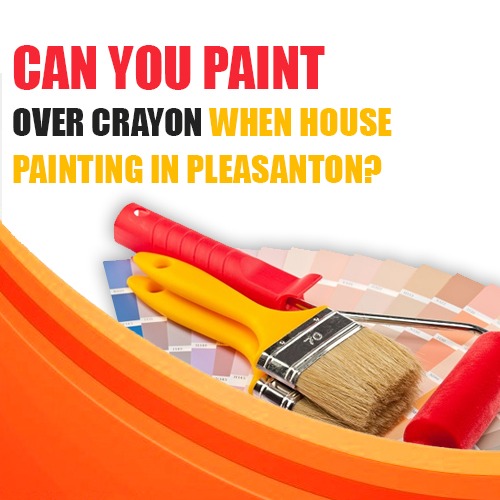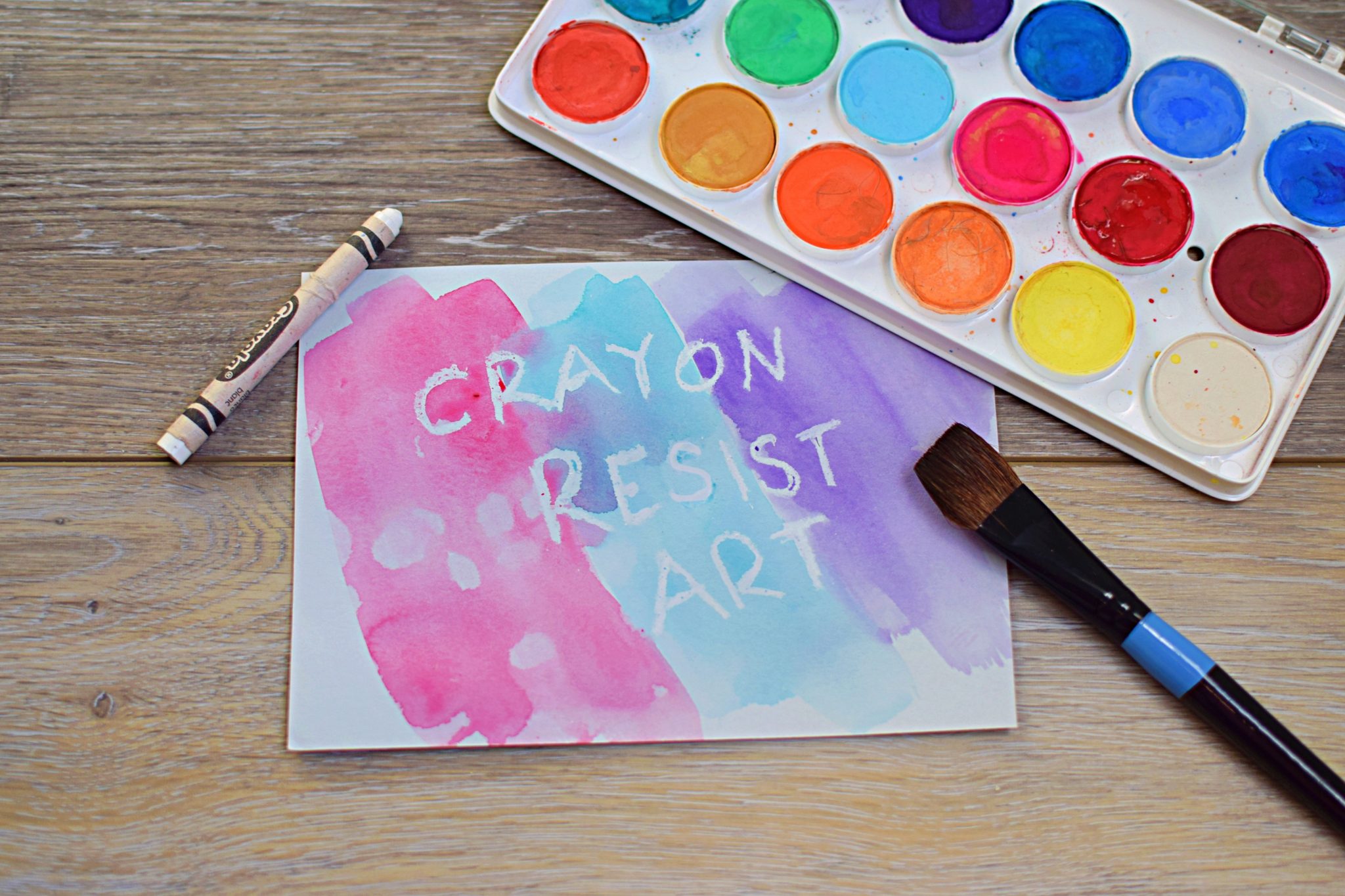Yes, you can paint over crayon. Crayon marks can be covered up with a layer of paint, but it is important to properly prepare the surface before painting.
Crayon wax can be difficult to cover completely and may require additional layers of paint. Additionally, it is important to use a primer before applying paint to ensure that the color adheres properly. We will discuss the steps involved in painting over crayon and provide some tips for achieving a smooth and even finish.
Whether you are looking to update your child’s artwork on the walls or simply want to cover up some unsightly crayon marks, this guide will help you get the job done right.
Contents
Understanding Crayon And Paint
Properties Of Crayons
Crayons are wax-based drawing tools that come in various colors, known for their vibrant pigments and smooth application on paper surfaces. They are preferred by children and artists alike for their easy handling and blendability, making them a popular choice for creative projects.
Types Of Paint To Use
When it comes to painting over crayon markings, it’s crucial to select the right type of paint to ensure a successful outcome. Acrylic paint is an excellent choice for covering crayon marks due to its quick-drying nature and ability to adhere well to different surfaces. Latex paint is another suitable option, known for its durability and versatility, making it ideal for covering crayon markings on walls and other surfaces.

Credit: custompaintinginc.com
Preparation Steps
When it comes to painting over crayon marks on walls, proper preparation is crucial to ensure a successful and long-lasting result. By following the necessary preparation steps, you can effectively cover up those colorful marks and achieve a professional-looking finish. The key preparation steps include surface cleaning and priming the area.
Surface Cleaning
Before you begin painting over crayon, it’s essential to thoroughly clean the surface to ensure proper adhesion of the new paint. Use a mild detergent and water to clean the affected area, and scrub gently to remove any dirt, grime, or crayon residue. Rinse the wall with clean water and allow it to dry completely before proceeding to the next step.
Priming The Area
Once the surface is clean and dry, it’s time to prime the area to create a smooth and uniform base for the new paint. Choose a high-quality primer that is suitable for the surface you are working on, whether it’s drywall, plaster, or another material. Apply the primer evenly using a roller or brush, and ensure complete coverage of the crayon marks and surrounding area. Allow the primer to dry according to the manufacturer’s instructions before applying the topcoat.
Techniques For Painting Over Crayon
Layering Approach
When painting over crayon marks, using a layering approach can effectively cover the crayon and provide a smooth finish. Start by applying a primer to the surface, which helps the paint adhere better and prevents the crayon from bleeding through. Once the primer is dry, apply several thin coats of paint, allowing each layer to dry completely before adding the next. This method helps to gradually conceal the crayon marks without creating a thick, uneven surface.
Blending Methods
Blending techniques are essential when painting over crayon, especially if the surface has intricate details or textures. One effective method is to use a dry brush technique, where a minimal amount of paint is applied to the brush and then lightly swept over the crayon marks. This helps to blend the paint with the existing surface, creating a seamless finish. Another technique is to use a feathering motion with the brush, gently blending the paint over the crayon marks to achieve a natural and uniform appearance.

Credit: entertainyourtoddler.com
Troubleshooting And Tips
When it comes to painting over crayon marks, troubleshooting and tips are essential to ensure a successful and professional-looking finish. Here are some helpful strategies for dealing with stubborn stains and enhancing adhesion.
Dealing With Stubborn Stains
If you’re facing stubborn crayon stains on your walls, there are a few effective methods for addressing them before painting. Start by gently scraping off as much crayon residue as possible using a plastic scraper. Then, apply a small amount of mild detergent or a mixture of baking soda and water to the affected area, and scrub gently with a soft-bristled brush. Rinse with clean water and allow the surface to dry completely before proceeding with painting.
Enhancing Adhesion
To ensure that the new paint adheres well to the surface, it’s crucial to prepare the area properly. Begin by priming the walls with a high-quality primer that is specifically designed to promote adhesion. This will create a smooth and uniform surface for the paint to adhere to, preventing any crayon residue from bleeding through the new coat. Additionally, consider using a paint with a higher sheen, such as satin or semi-gloss, as these finishes provide better adhesion and are more resistant to stains and marks.
Finishing Touches
Sealing The Surface
Before proceeding with painting over crayon marks, it’s crucial to seal the surface properly. Use a primer specifically designed to cover crayon markings.
Adding A Protective Coat
After painting over the crayon marks, adding a protective coat is essential. This coat will not only enhance the durability of the paint but also make it easier to clean in the future.

Credit: entertainyourtoddler.com
Creative Ideas For Transformation
Embark on a journey of creative ideas for transformation with crayon art! Discover how you can incorporate crayon art into decor and personalize the space effortlessly.
Incorporating Crayon Art Into Decor
Revamp your living space with vibrant crayon art pieces that add a pop of color and personality. Use crayon art as focal points on walls or as accents on furniture to create a unique and lively atmosphere.
Personalizing The Space
Infuse your personal touch into the space by creating custom crayon art pieces that reflect your style and interests. Whether it’s abstract designs, intricate patterns, or inspirational quotes, let your creativity shine through.
Frequently Asked Questions
What Paint Will Cover Crayons?
Acrylic or latex paint will effectively cover crayon marks on walls or paper. Apply a primer before painting for better coverage.
How Do You Remove Crayon Before Painting?
To remove crayon before painting, use a hairdryer to melt the crayon wax, then wipe it off with a cloth. Alternatively, apply a mixture of baking soda and water, scrub gently, and rinse.
Can Acrylic Paint Go Over Crayon?
Yes, acrylic paint can go over crayon. However, it is important to note that the surface should be properly cleaned and primed before applying acrylic paint to ensure better adhesion and longevity.
Does Kilz Cover Crayons?
Yes, Kilz can cover crayons. Kilz is a primer that is designed to cover stains, including crayons, so it can be used to cover up any markings or stains on a surface before painting or applying a topcoat.
Conclusion
Painting over crayon is possible with the right techniques. Remember to prime the surface first for best results. Experiment with different paints and methods to find what works for you. Have fun and get creative with your crayon-covered surfaces!
